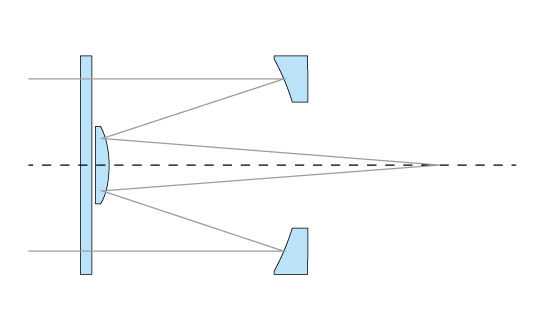Glossary | Telescopes | Optics | Type of build | Schmidt-Cassegrain
Convenient and compact

Many amateurs swear by these telescopes because they are compact and easy to transport. They offer an ultra-short overall length and a long focal length.
A main mirror with a central hole reflects the incoming light. From here it hits a secondary mirror which is located on the back of the corrector plate and extends the focal length. Then it goes in the other direction back to the main mirror, where it falls through the central hole. What a journey! Now the light has arrived in the focuser.
What it can and what it cannot do
The Schmidt-Cassegrain telescope is an all-round telescope because you can actually do anything with it. Nevertheless, this telescope also has its disadvantages: with a small aperture ratio of 1:10 or less, the telescope is well suited to visual observation.
However, if you want to take photographs with it, you will encounter problems due to the relationship between the aperture and the focal length: tracking with the telescope must be done very precisely.
The Schmidt plate (the corrector at the front) protects the interior from dust and other contamination. However, in closed systems such as these, the time taken until the telescope adapts to the ambient temperature is relatively long.
The long focal length produces relatively small fields of view. A Schmidt-Cassegrain telescope has the disadvantage that it displays field curvature. With photography, a certain amount of blurring at the edges can arise. Other aberrations are so limited that they remain within the diffraction discs and are not noticeable.
